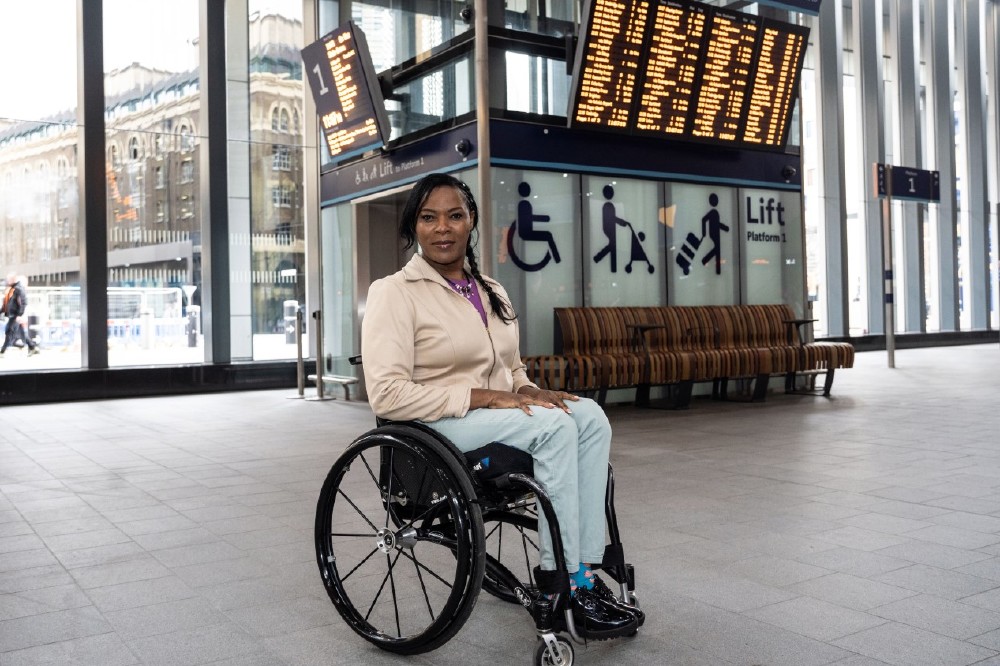One in four disabled people say the attitudes of other passengers prevent them from using public transport (Scope). This is a shocking statistic. Once I was neglected and left to wait on a plane for 45 minutes before airport staff helped me off the plane. Another time, I had an accident on a three-hour train ride with an out-of-order accessible loo. I was humiliated. These are not isolated incidences. They are happening all the time for people with disabilities. They should not be happening when men have walked on the moon.

Anne Wafula Strike
I’m backing a positive campaign from the Department for Transport (DfT) called ‘it’s everyone’s journey’, that launched recently to improve the journeys of disabled passengers on public transport. According to DfT research, behaviours that make public transport a daunting place for disabled people are often unconscious.
These seven tips should therefore encourage everyone to step out of their commuter bubble and be mindful of the needs of fellow passengers. If people take these tips to heart, then taking public transport will be a more positive experience for everyone, not just disabled people. We must remember these tips each time we take public transport.
I am hoping this is just the beginning. As well as encouraging consumers to be mindful of the needs of disabled people when travelling, transport providers need to address infrastructure challenges preventing disabled people from having a positive journey. Achieving equality for disabled people on public transport is everyone’s responsibility.
1. Don’t assume all disabilities are visible. Many disabilities are invisible, ranging from learning disabilities to autism. People with invisible disabilities face different challenges on public transport than those with visible disabilities, such as people not offering up their seat or offering help when they are in distress.
2. Respect accessible spaces. It’s great that train operators have created accessible spaces on the trains such as for wheelchair users. The public should respect those spaces to ensure they can be accessed easily by disabled and vulnerable passengers who may have greater needs.
3. Be mindful of others. When travelling on public transport, put down your book, phone or kindle, take off your headphones and engage with passengers around you. Sometimes just lifting your head, nodding and smiling will make someone’s day. Small actions make a massive difference. This will benefit everyone, not just disabled and vulnerable passengers.
4. Don’t rush. It feels like there is always a reason to rush from A to B when travelling. However, when you rush you are more likely to bash into fellow passengers. People with disabilities such as Crohn’s or Arthritis can experience severe pain when barged by other passengers. Remember, if you knock someone with a disability, you may also knock their confidence of travelling and of living an independent life.
5. Offer your seat to those who need it. Especially if you are sitting in a priority seat, be aware that others may need the seat more than you do. When in doubt, just ask. People with invisible disabilities should not have to explain to other passengers endlessly why they need to sit down whilst travelling.
6. Don’t be afraid to ask people who look distressed if they need help. People with invisible disabilities, such as learning difficulties, often face confusion and distress when taking public transport. If someone looks confused, offer a helping hand.
7. Watch the “it’s everyone’s journey” campaign video and search the hashtag #ItsEveryonesJourney. The video explains how our unconscious behaviour such as talking too loudly and not offering up our seat can have a negative impact on people with disabilities.

